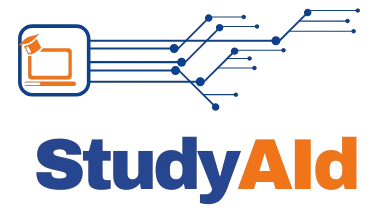Introduction
As educators, we have the privilege and responsibility of preparing students for a future increasingly intertwined with advanced technology. Artificial Intelligence (AI) stands at the forefront of this technological revolution, promising to transform various aspects of our lives, including education. Integrating AI into the learning process is not just a trend but a necessity to equip students with the skills they need to thrive in a rapidly evolving world. In this blog, we will explore the importance of integrating AI into education using frameworks such as the AI Assessment Scale (AIAS) and Bloom AI. Additionally, we will discuss the need for syllabus statements regarding AI usage and the importance of students declaring their AI usage in assignments.
The Imperative of AI Integration in Education
AI has the potential to revolutionize the educational landscape by providing personalized learning experiences, automating administrative tasks, and enhancing educational outcomes. By integrating AI, educators can create more engaging and effective learning environments that cater to the diverse needs of students. Here’s why AI integration is crucial:
- Personalized Learning: AI can tailor educational content to meet individual student needs, providing customized resources and feedback that enhance learning.
- Enhanced Engagement: Interactive AI tools can make learning more engaging, helping students stay motivated and interested in their studies.
- Efficiency: AI can automate routine tasks such as grading and attendance tracking, allowing educators to focus more on teaching and mentoring.
- Future-Ready Skills: Familiarity with AI tools prepares students for a future where AI will be integral to many professions.
Frameworks for Effective AI Integration: AIAS and Bloom AI
To integrate AI effectively into the learning process, educators can leverage structured frameworks like the AI Assessment Scale (AIAS) and Bloom AI.
AI Assessment Scale (AIAS)
The AI Assessment Scale (AIAS) provides a structured approach to integrating AI into educational assessments, ensuring a balance between academic integrity and the benefits of AI. The scale outlines six levels of AI usage, ranging from no AI involvement to full AI collaboration:
- Level 0: No AI Usage – Emphasizes critical thinking and foundational knowledge without AI assistance.
- Level 1: AI-Assisted Information Recall and Retention – Utilizes AI for memorization aids and foundational learning.
- Level 2: AI-Assisted Idea Generation and Structuring – Employs AI for brainstorming and organizing ideas.
- Level 3: AI-Assisted Editing – AI aids in refining and improving student-created content.
- Level 4: AI Task Completion with Human Evaluation – AI completes specific tasks with student evaluation and commentary.
- Level 5: Full AI Assistance – AI supports throughout the assessment process without specifying which content is AI-generated.
- Level 6: Full AI Collaboration – AI actively collaborates in the creation of content, enhancing creative outputs.
Bloom AI Framework
The Bloom AI framework integrates AI with Bloom’s Taxonomy, categorizing AI-generated prompts into six cognitive levels—Remember, Understand, Apply, Analyze, Evaluate, and Create. This approach standardizes AI prompts, enhancing critical thinking and academic skills:
- Remember – AI aids in recalling facts and basic concepts.
- Understand – AI helps explain ideas and concepts.
- Apply – AI prompts the use of information in new situations.
- Analyze – AI assists in breaking down information and identifying patterns.
- Evaluate – AI supports making judgments based on criteria and standards.
- Create – AI collaborates in generating new ideas and projects.
Syllabus Statements and AI Declarations
To ensure transparency and integrity in AI usage, it is essential for educators to include syllabus statements regarding AI and require students to declare their AI usage. Here’s how to implement these measures:
Syllabus Statement
Include a clear statement in your syllabus outlining the permitted levels of AI usage in assignments. This statement should define the expectations and limitations regarding AI tools, ensuring students understand how they can ethically incorporate AI into their work.
AI Declaration
Require students to submit an AI Declaration alongside any assignment that involves AI tools. This declaration should detail how AI was used, the specific tools utilized, and confirm adherence to the guidelines outlined in the AIAS or Bloom AI frameworks. Here is an example of a declaration statement:
AI Declaration of Use Statement
Level 2: AI-Assisted Idea Generation and Structuring
“During the preparation of this assignment, I utilized the Essay Inspiration Generator to generate foundational ideas and create a structured outline. After leveraging these tools, I conducted a thorough review and made necessary edits to ensure no AI-generated content was included in the final submission. I hereby assume complete responsibility for the quality and accuracy of the content presented in this publication.”
Conclusion
Integrating AI into the educational process is crucial for preparing students for the future. By using structured frameworks such as AIAS and Bloom AI, educators can effectively and ethically incorporate AI tools into their teaching strategies. Including syllabus statements on AI usage and requiring AI Declarations from students ensures transparency and fosters a culture of integrity. Let’s embrace the potential of AI in education and equip our students with the skills they need to succeed in a technologically advanced world.
About StudyAID Catalog
At StudyAID, we are committed to revolutionizing education through the innovative integration of AI. Our extensive catalog of AI-integrated assignments and tools empowers educators and students, enhancing the learning experience. Visit StudyAID Catalog to explore our resources and discover how AI can transform your educational journey.
By adopting these practices, educators can create a balanced, engaging, and future-ready learning environment, preparing students to thrive in an AI-driven world.




